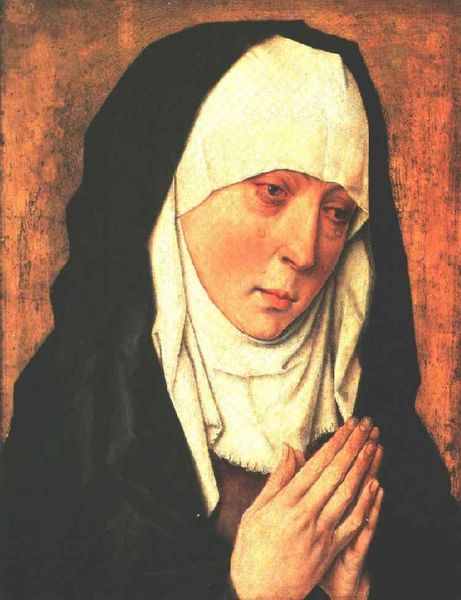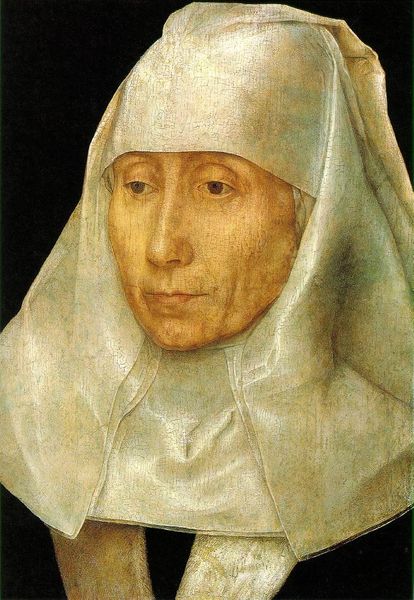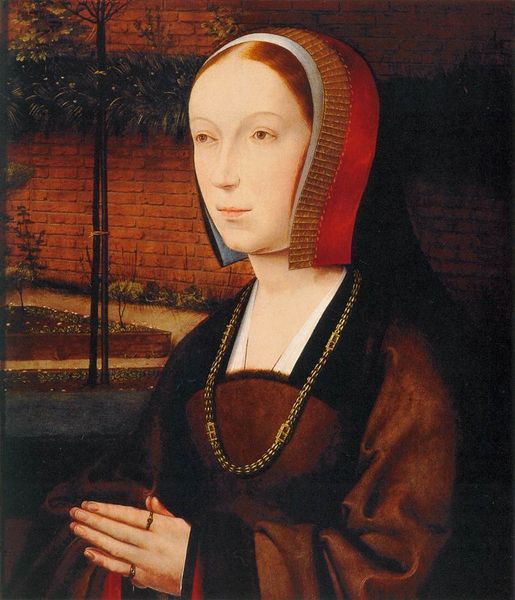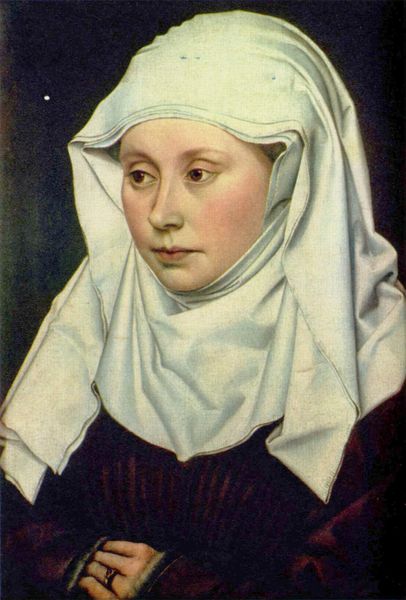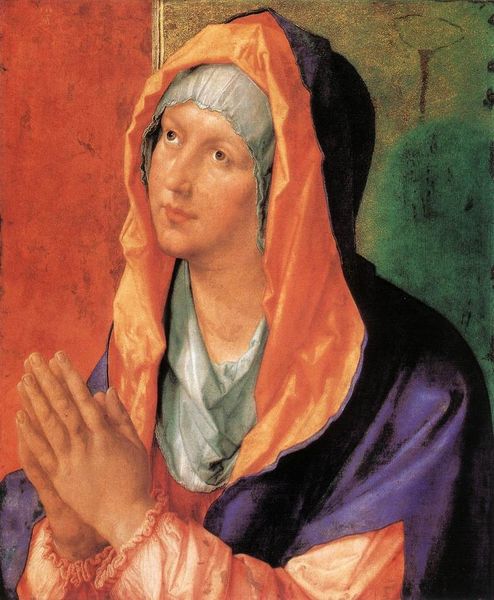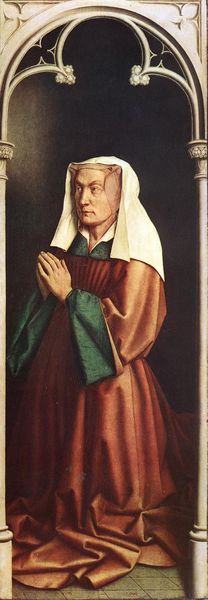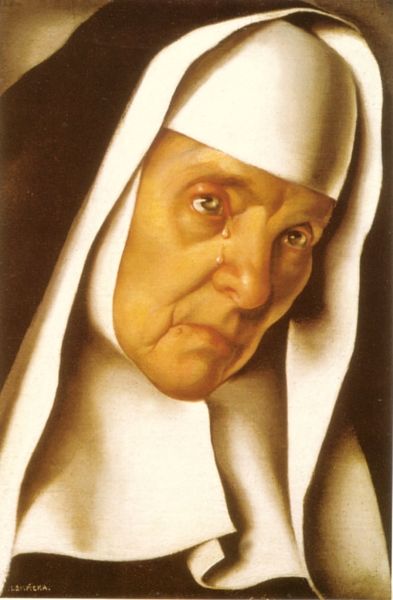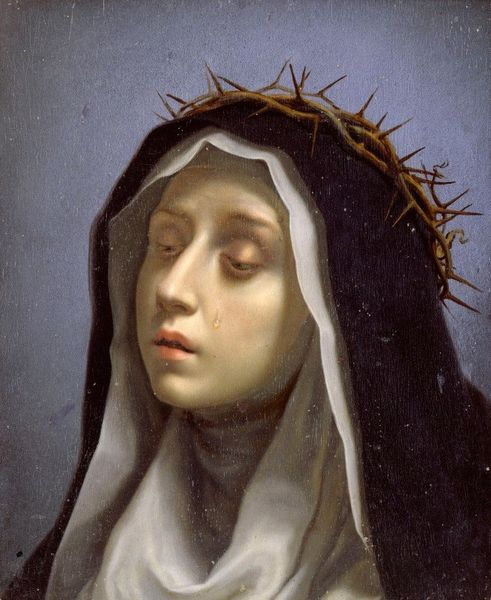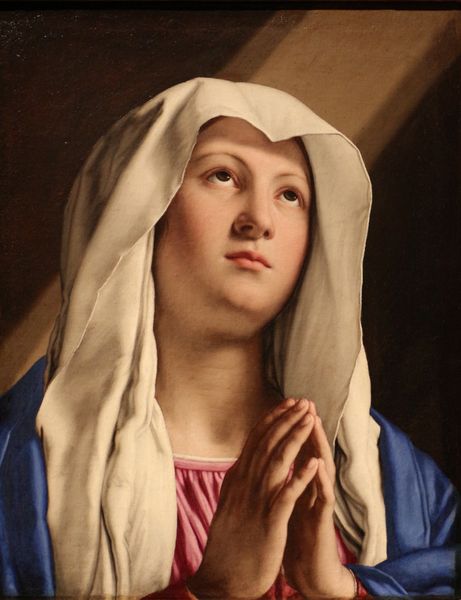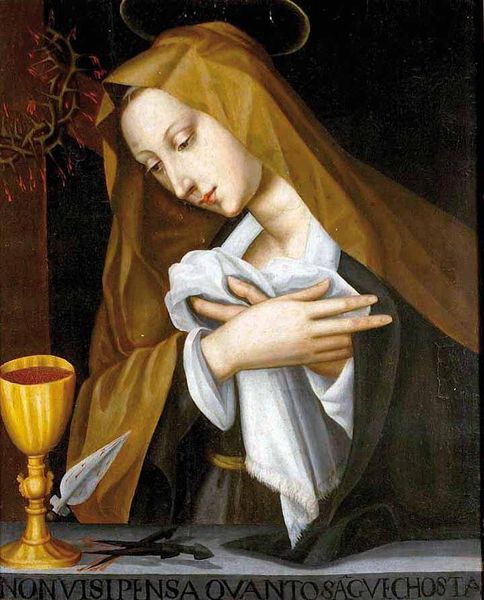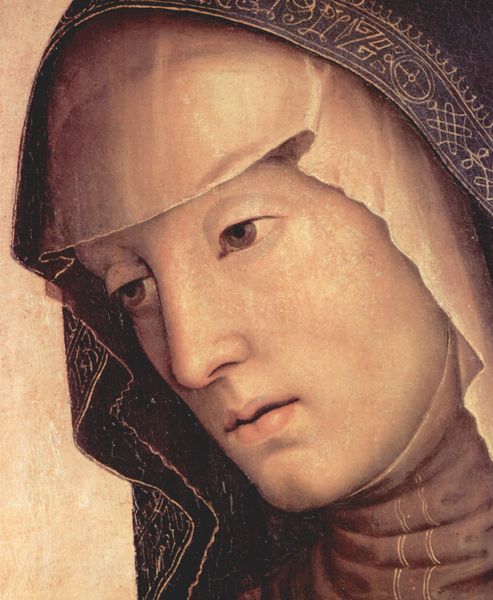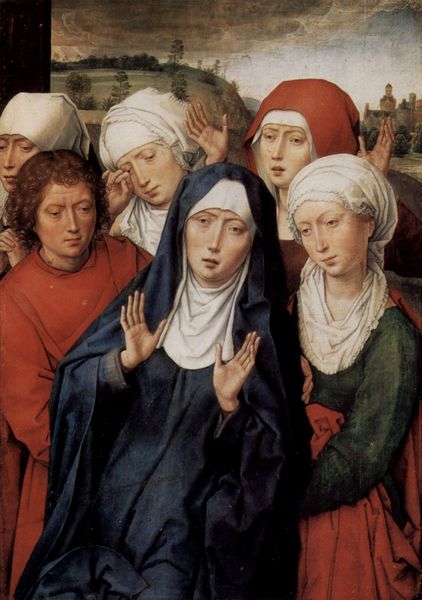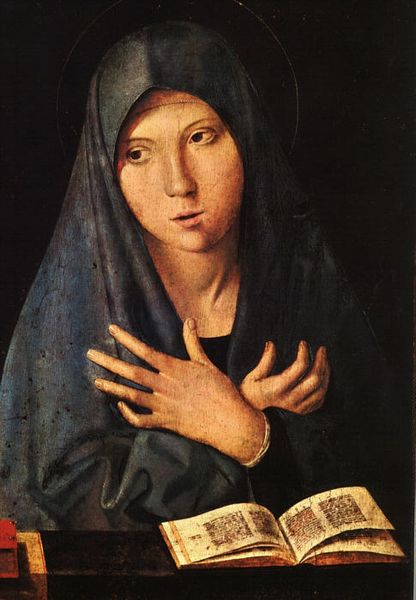
painting, oil-paint
#
portrait
#
painting
#
oil-paint
#
northern-renaissance
#
miniature
Dimensions: 55 x 33 cm
Copyright: Public domain
Hans Memling painted this Mater Dolorosa, or Sorrowful Mother, in the late 15th century. Observe her clasped hands, a gesture laden with centuries of supplication and grief. The hands, pressed together, form a universal symbol of prayer, echoing across cultures and eras. Consider the Weeping Women of antiquity, their faces obscured by grief, their hands raised in lament. This motif reappears through the ages. In medieval depictions of the Crucifixion, Mary’s clasped hands convey her profound sorrow. It transcends mere religious narrative; it taps into humanity's collective memory of loss and mourning. The image resonates deeply, engaging us on a subconscious level with themes of suffering and empathy. This iconography of grief, passed down through generations, evolves with each retelling. The clasped hands, a symbol of piety, also become a vessel for expressing our deepest sorrows. The Mater Dolorosa, with her timeless gesture, remains a potent symbol, continually reshaped by the ever-changing currents of human experience.
Comments
No comments
Be the first to comment and join the conversation on the ultimate creative platform.
